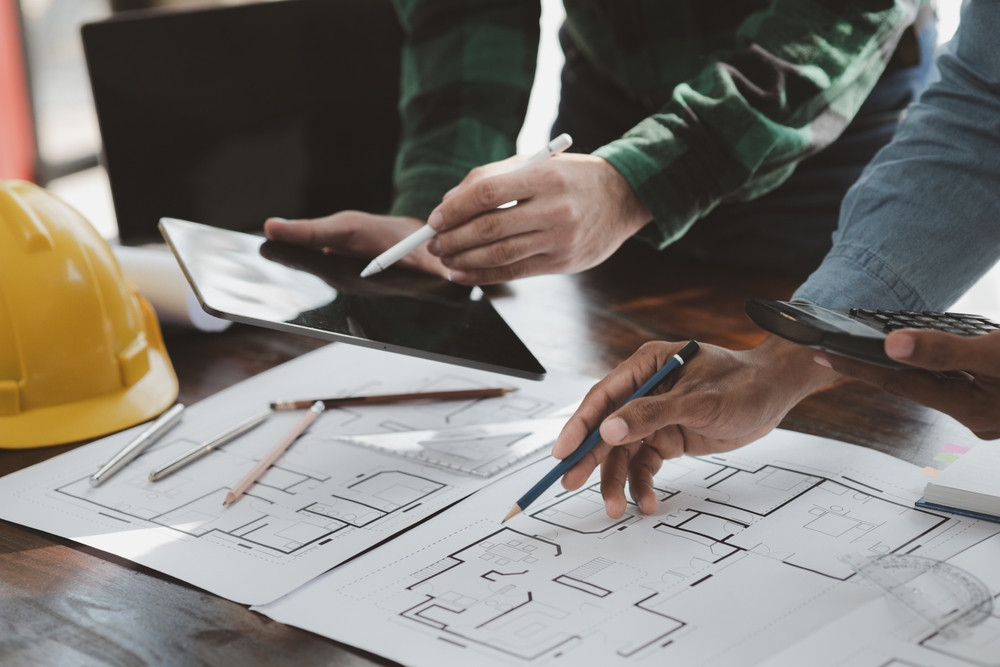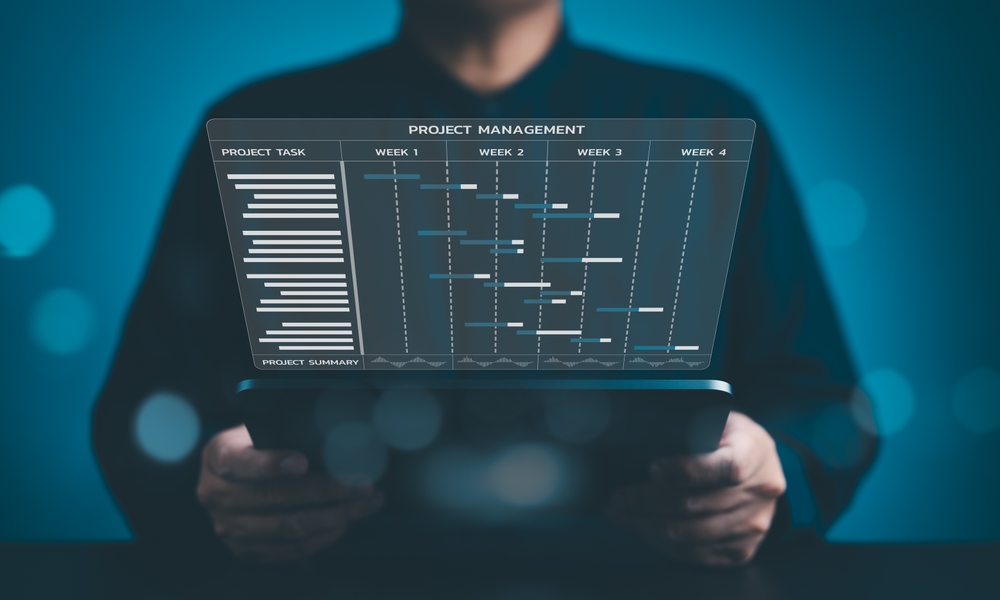The Role of AI and Machine Learning in Construction
The Role of AI and Machine Learning in Construction

Role of AI and Machine Learning in Construction: Artificial Intelligence (AI) and Machine Learning (ML) are transforming industries globally, and construction is no exception. By leveraging these advanced technologies, the construction sector is experiencing a shift in how projects are planned, executed, and managed. From improving safety on construction sites to optimizing project schedules and resource allocation, AI and ML are paving the way for smarter, more efficient construction processes.
Key Roles of AI and Machine Learning in Construction
1. Project Planning and Design Optimization
AI and ML play a critical role in improving the planning and design stages of construction projects.
- Generative Design: AI-powered generative design tools allow architects and engineers to input design parameters such as materials, budget, and spatial requirements. The system then generates multiple design solutions, offering innovative and optimized structures. This process can lead to better designs that are more efficient in terms of both cost and functionality.
- Building Information Modeling (BIM): AI can be integrated with BIM systems to automate design updates and changes. By analyzing data from past projects, AI can predict potential issues or design inefficiencies, helping to create more effective project plans.
2. Predictive Analytics for Risk Management
AI’s ability to process vast amounts of data makes it a valuable tool for risk management in construction projects.
- Identifying Risk Factors: AI algorithms can analyze historical project data to identify patterns and predict potential risks, such as cost overruns, delays, or safety incidents. This allows project managers to take proactive steps to mitigate risks before they escalate.
- Accurate Forecasting: AI-driven predictive analytics tools can forecast project timelines, cost estimates, and resource needs with a higher degree of accuracy. This reduces the chances of unexpected delays and budget overruns, enabling better overall project management.
3. Improved Safety and Compliance
Safety is a top priority in construction, and AI-powered systems are making worksites safer by monitoring and preventing accidents.
- AI-Enabled Wearables: AI-integrated wearables, such as helmets or vests, can monitor worker movements, health metrics, and environmental factors like heat or air quality. If dangerous conditions are detected, these devices can send real-time alerts to prevent accidents.
- Computer Vision for Safety Compliance: Machine learning algorithms can analyze video feeds from construction sites to detect unsafe behavior, such as workers not wearing protective gear or operating heavy machinery improperly. These systems can automatically flag potential safety violations and notify supervisors to take corrective action.

4. Autonomous Construction Equipment
Autonomous machinery powered by AI is beginning to revolutionize construction by reducing the need for manual labor in certain tasks.
- Self-Driving Equipment: AI-driven construction equipment, such as bulldozers, excavators, and trucks, can perform repetitive tasks with precision, speed, and efficiency. These machines can work around the clock, accelerating project timelines and reducing labor costs.
- Robotic Bricklaying and 3D Printing: Robots powered by AI are being used to lay bricks and pour concrete in large-scale projects. Machine learning algorithms help these robots learn and adapt to varying construction conditions. In addition, 3D printing technology, integrated with AI, is used to construct entire buildings quickly and efficiently, reducing waste and labor costs.
5. Enhanced Resource Management
Effective resource management is crucial for ensuring construction projects stay within budget and on schedule. AI and ML offer tools to optimize the use of materials, labor, and equipment.
- Optimizing Material Usage: AI can analyze construction plans and historical data to determine the exact amount of materials needed for a project, minimizing waste and ensuring that the right quantities are ordered. It can also suggest alternative materials that are more cost-effective or environmentally friendly.
- Labor and Equipment Allocation: Machine learning algorithms can predict the optimal number of workers and machinery required for each phase of a project. This helps in reducing downtime, minimizing costs, and ensuring efficient resource utilization across multiple job sites.
6. Real-Time Progress Tracking and Monitoring
AI is transforming project management by providing real-time insights into construction progress.
- Drones for Site Monitoring: AI-enabled drones can capture aerial footage of construction sites, providing an up-to-date view of project progress. These drones use machine learning algorithms to analyze the data and compare it with project plans, enabling project managers to track milestones and make informed decisions.
- Digital Twins: A digital twin is a virtual replica of a physical asset or system. AI and ML are used to create digital twins of construction projects, allowing project managers to monitor and simulate different scenarios in real-time. This provides better insights into how the project is progressing and enables more accurate forecasting of timelines and costs.
7. Automation of Administrative Tasks
AI is automating repetitive administrative tasks, freeing up time for construction professionals to focus on higher-value activities.
- Document Management: Machine learning algorithms can sift through vast amounts of project documents, contracts, and blueprints to find relevant information quickly. AI systems can also automatically categorize, store, and retrieve documents, improving overall efficiency in project management.
- Smart Contract Management: AI can be used to automate the creation and management of contracts, including monitoring compliance and flagging any discrepancies. This reduces the time and effort spent on administrative tasks while ensuring that all contractual obligations are met.
8. Sustainability and Environmental Impact
As sustainability becomes a major concern in the construction industry, AI and ML are being used to create eco-friendly solutions.
- Energy Efficiency: AI can analyze energy usage data from buildings and construction sites to optimize energy consumption. By predicting peak energy usage and identifying inefficiencies, AI systems can help reduce the overall carbon footprint of construction projects.
- Material Sustainability: AI can be used to recommend sustainable materials based on project specifications and environmental impact goals. By analyzing the lifecycle of different materials, AI helps construction companies make more eco-friendly choices.
Challenges of AI and Machine Learning Adoption in Construction
While AI and ML offer significant benefits, there are challenges associated with their adoption in the construction industry.
1. High Implementation Costs
The initial investment in AI and ML technologies, such as hardware, software, and training, can be expensive. Smaller construction firms may find it challenging to adopt these technologies due to limited budgets.
2. Resistance to Change
The construction industry is traditionally slow to adopt new technologies. Many construction professionals are accustomed to conventional methods, and there can be resistance to change, especially when it involves learning new tools and workflows.
3. Data Availability and Quality
AI and ML rely on large amounts of data to function effectively. In construction, data collection can be inconsistent, incomplete, or unstructured, making it difficult for AI systems to deliver accurate predictions and insights.
4. Integration with Existing Systems
AI and ML solutions need to integrate seamlessly with existing construction management tools, such as BIM or project management software. Ensuring compatibility and smooth data flow between different systems can be a challenge for construction firms.
The Future of AI and Machine Learning in Construction
The future of AI and ML in construction is promising, with continued advancements expected to enhance the industry further. Some trends to watch include:
- AI-Driven Prefabrication: AI will play a larger role in prefabrication, where components of a building are constructed off-site and then assembled on-site. AI systems can optimize the design, fabrication, and transportation processes, leading to faster project completion times.
- AI-Powered Sustainability Solutions: As the demand for sustainable construction grows, AI will increasingly be used to design buildings with lower environmental impact, from material selection to energy efficiency.
- More Sophisticated Autonomous Systems: Autonomous construction equipment and robots will become more advanced, capable of handling complex tasks that require human intervention today.
- AI-Enhanced Collaboration Platforms: AI will further enhance collaboration tools, enabling real-time data sharing and decision-making across multiple stakeholders, from architects to construction workers.
Conclusion
AI and machine learning are revolutionizing the construction industry by optimizing project planning, improving safety, enhancing resource management, and automating administrative tasks. While challenges remain, the potential for AI and ML to improve efficiency, reduce costs, and ensure safer and more sustainable construction projects is undeniable. As the technology matures and becomes more widely adopted, AI and ML are set to play an even more critical role in shaping the future of construction.
External Resources for Legal Guidance
Role of AI and Machine Learning in Construction
Read more related articles to enhance your knowledge and make informed decisions
10 Essential Steps in the Building Construction Process
How to Choose the Right Materials for Your Construction Project








